Located south of the Gulf of Mexico, west of the Atlantic Ocean, and amid thousands of islands lies a body of water known as the Caribbean Sea. This sea has provided humans with natural resources, food, and most recently, a place for tourists to escape mundane reality. Its climate is near-perfect throughout the entire year. The Caribbean Sea is an important body of water for the region.
Let’s take a look at 10 incredible facts about the Caribbean Sea and learn how fascinating this body of water is.
1. Islands Galore
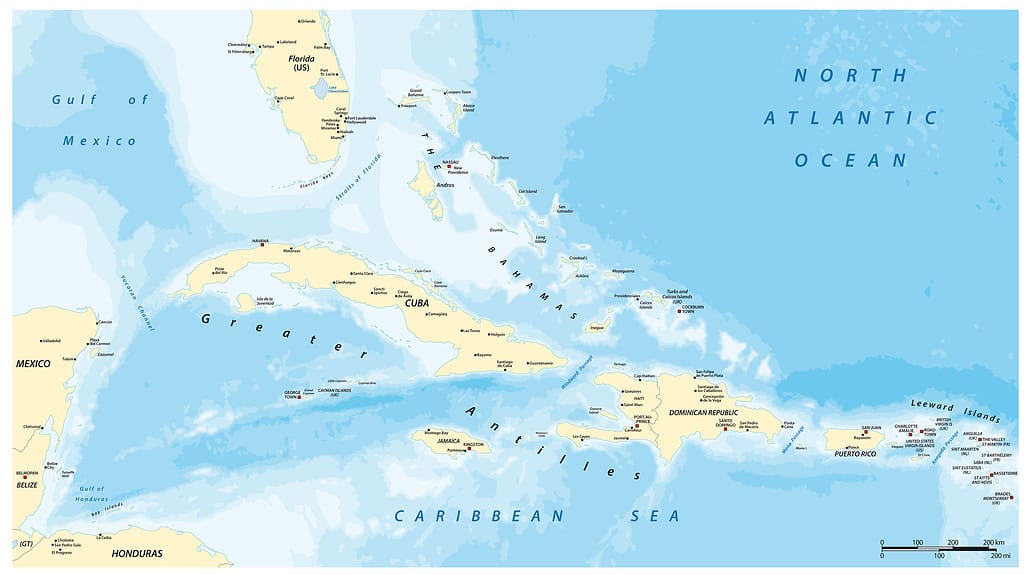
Although the Caribbean Sea is the eighth-largest sea in the world, the Philippine Sea is the largest.
©Rainer Lesniewski/iStock via Getty Images
The Caribbean Sea is home to more than 7,000 islands. That’s right! On the map, you may be able to find as many as thirty, but in fact, the sea is splattered with islands of all sizes. There are popular tourist destinations like Jamaica or Aruba, but there are also more remote islands like Dominica or Turks and Caicos. If you’re headed to the Caribbean for a nice beachy holiday, try to balance out your stay with touristic islands for fun activities and more off-the-beaten-path islands to provide you with more charm.
2. Blue Waters and Sandy Beaches
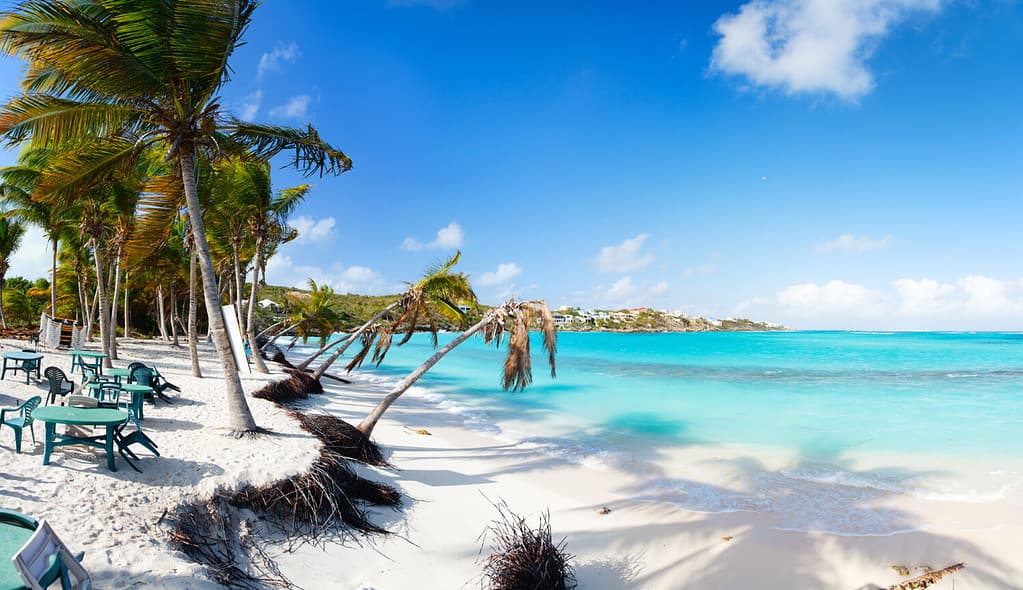
Cuba is the largest island in the Caribbean Sea.
©BlueOrange Studio/Shutterstock.com
The first thing that pops into your head when someone says the Caribbean is the turquoise waters and the white, sandy beaches. The Caribbean is home to some of the most gorgeous views in the world. You can lie on the beach and be stunned by the beautiful view. Some of the best beaches in the world are in the Caribbean and you won’t be disappointed.
For some turquoise blue waters, you can head to Pigeon Point Beach on the island of Tobago in Trinidad and Tobago. If you want something more all-inclusive during your stay, head to Bávaro Beach in the Dominican Republic. The sandy beaches and aquamarine waters are sure a sight to see and just what the doctor ordered.
3. Infamous for Hurricanes
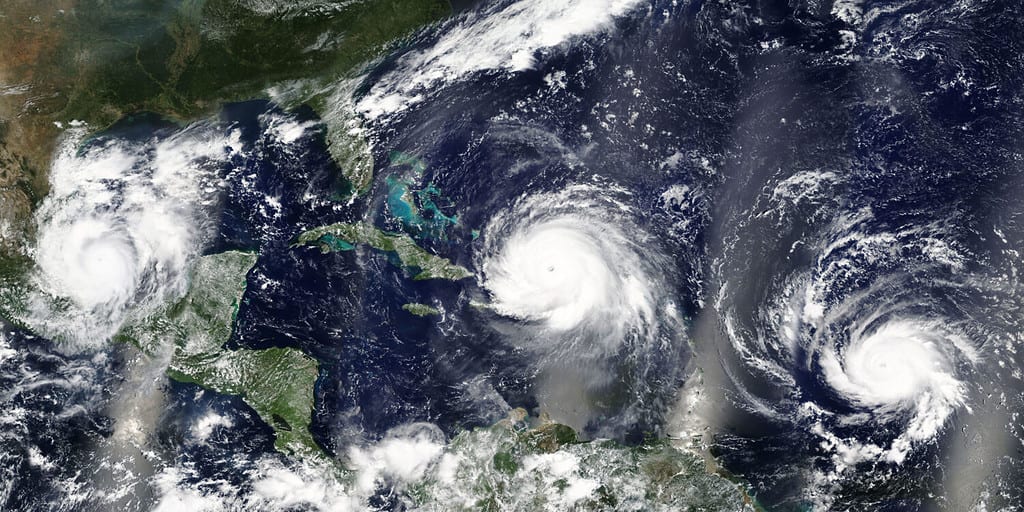
Besides hurricanes and tropical cyclones, earthquakes are also prominent in the Caribbean region.
©lavizzara/Shutterstock.com
The Caribbean Sea is infamously warm and because of those temperatures, it makes it perfect for powerful hurricanes or tropical cyclones to form. Throughout history, these hurricanes have caused devastating damage to the Caribbean islands. Most recently, Hurricane Sandy was one of the deadliest and costliest hurricanes ever to hit the region. The hurricane killed 54 people in Haiti alone and 200,000 people were left homeless. It cost $100 million in damages and left 70% of Jamaica without electricity. It also destroyed 15,000 homes in Cuba. Sandy also affected the Atlantic coast in the United States.
4. Diverse Animal Life
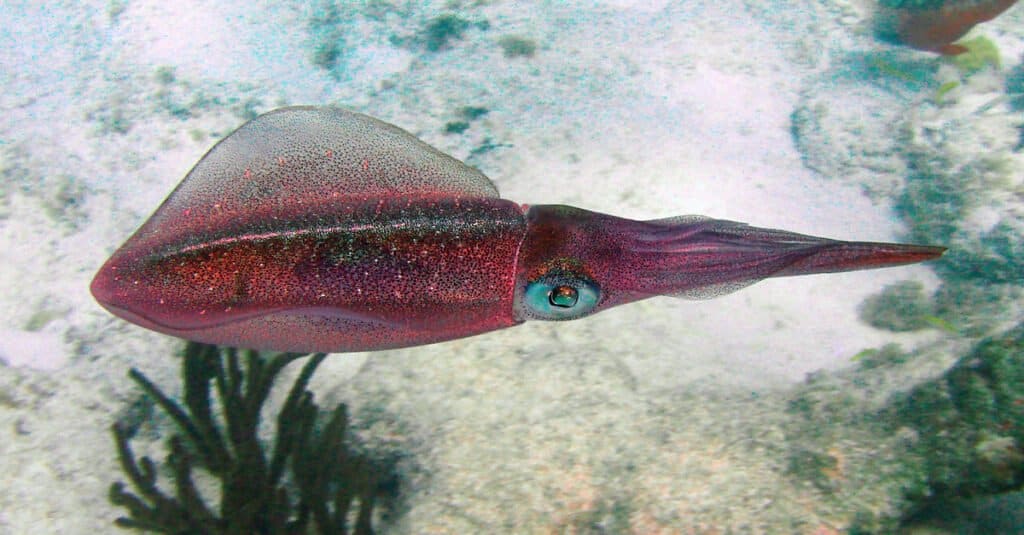
Ernest Hemingway’s posthumously released novel
Islands in the Stream, which was released in 1970, depicts the Caribbean Sea.
©Ernie Hounshell/Shutterstock.com
The Caribbean Sea is home to a great diverse population of marine life. Many of the species that make the sea home are also endemic to the region and are not found anywhere else in the world. The species you can spot while vacationing in the Caribbean are sharks, manta ray fish, eels, and an abundance of fish. If you are on land, there are 90 species of mammals like humpback whales and dolphins. There are also seals and manatees in the seas near Jamaica. Reptiles abound in the Caribbean islands so don’t freak out if you find a tiny lizard. The Caribbean is home to more than 500 species of reptiles like iguanas, turtles, and even alligators. When it comes to flora, there are 13,000 species of plants in the Caribbean region.
5. Coral Reef Paradise

In terms of GDP, the wealthiest country in the Caribbean Sea is Bermuda.
©LUNAMARINA/iStock via Getty Images
Speaking of corals, the Caribbean Sea is a coral reef paradise. The Mesoamerican Barrier Reef System, which is also called the Great Mayan Reef, extends from the Yucatan Peninsula in the Gulf of Mexico southward to Belize, Guatemala, and Honduras. Belize’s part of the reef makes up 30% of the Mayan reef. It is the second-largest coral reef in the world and home to thousands of species of marine animals.
6. Fascinating Pirate History
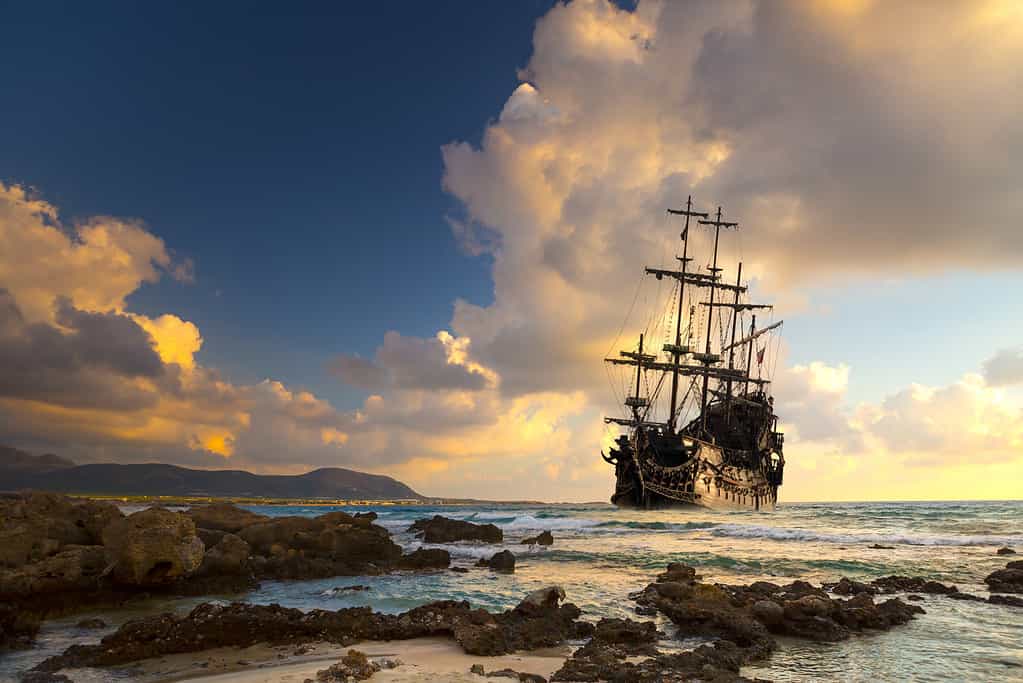
The Caribbean Sea has thousands of sea vessels at the bottom.
©Aleh Varanishcha/iStock via Getty Images
We’ve all heard of the Pirates of the Caribbean movies. The first film was filmed in the Caribbean and is set in Jamaica, the Caribbean Sea, and on Tortuga Island, off the coast of Haiti. After the European conquests of the islands, piracy became a part of life in the Caribbean. Pirates would loot ships and establish pirate ports along the Caribbean. A colorful cast of characters lived in the Caribbean Sea, including Blackbeard, Calico Jack, Anne Bonny, and “Black Sam” Bellamy.
7. Cultural Diversity

The Caribbean region is home to 23 UNESCO World Heritage sites.
©Delpixart/iStock via Getty Images
The Caribbean islands are a mix of different cultures. Natives lived on the islands for thousands of years and when Europeans arrived, the cultural diversity increased greatly. Most of the native population has died off because of the conquests, but what remains is a melting pot of people, traditions, languages, and cultures. The Spanish, Dutch, British, French, and other European countries settled on these islands and created a diverse pool of cultural heritage.
8. Deepest Sea in the World
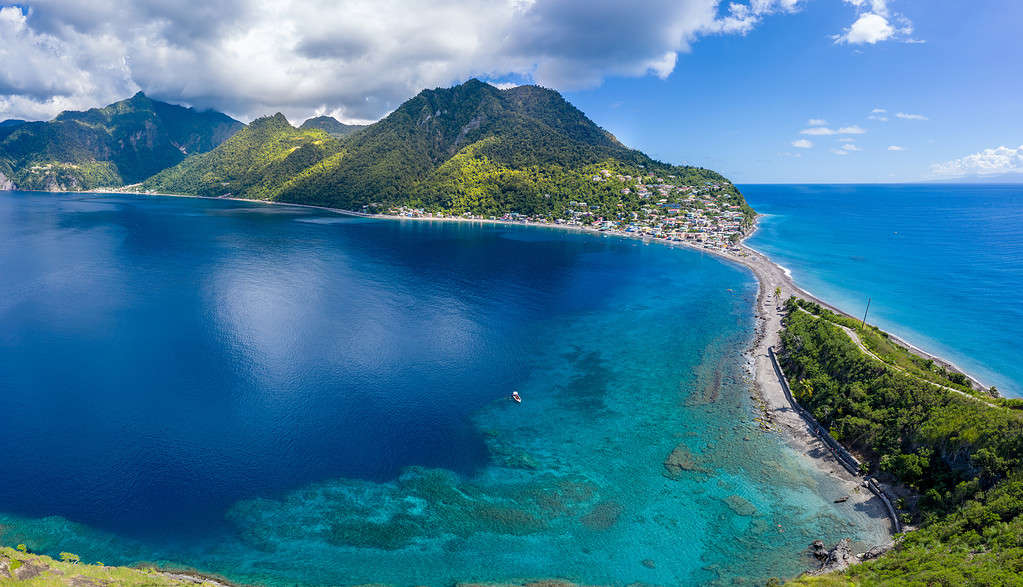
There are two trenches in the Caribbean Sea: the Cayman Trench and the Puerto Rico Trench, which is why the region is prone to earthquakes.
©Derek Galon/iStock via Getty Images
The Caribbean Sea is the deepest in the world. At its deepest, it is 25,217 feet deep, which is in the Cayman Trough, between the Cayman Islands and Jamaica. However, besides the Cayman Trough, the Caribbean Sea is one of the most shallow seas.
9. Offshore Petroleum Drilling
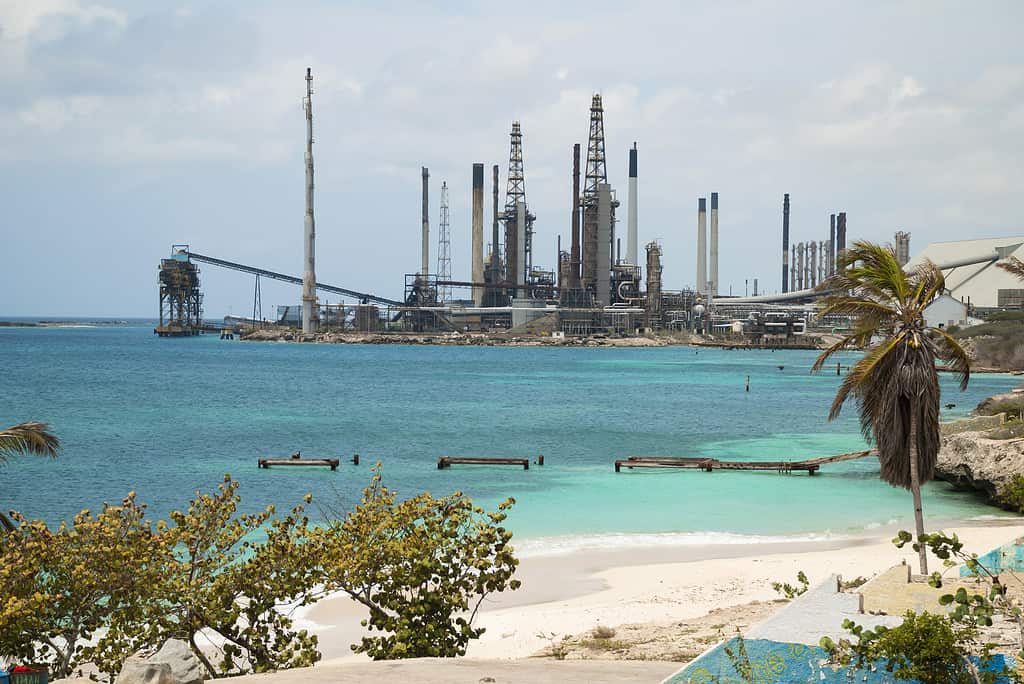
The Cayman Islands is infamous for being a tax haven for the wealthy, but there are also more businesses registered here than there are people.
©CircleEyes/iStock via Getty Images
Offshore oil drilling is a huge environmental problem in the Caribbean Sea. Several nations in the northern part of South America like Venezuela and Colombia have developed offshore petroleum drilling. Offshore oil drilling is dangerous, as it depletes natural resources in the area, but it also affects marine life in the waters. Recently, countries have banded together to either ban offshore drilling in their maritime borders or allow it but only if the revenue can go to environmental causes. The issue is contentious in this region because of the environmental damage oil drilling causes.
10. Important for Surrounding Nations
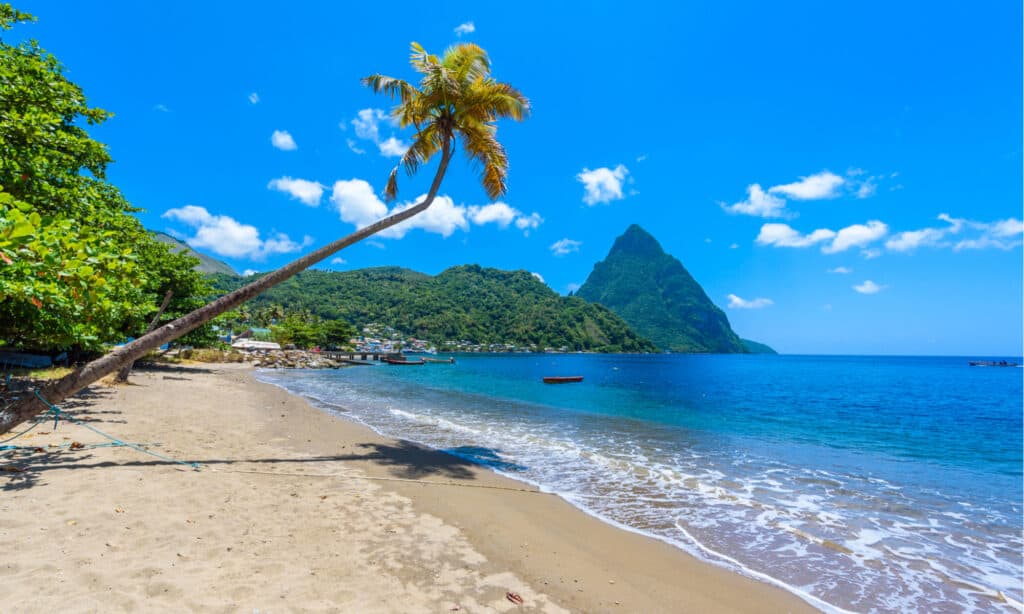
The shortest airport runway in the world is located in the Caribbean.
©Simon Dannhauer/Shutterstock.com
The Caribbean Sea is extremely important for the islands and other countries in the region. It sustains the economies of dozens of nations — ensuring that thousands of people have jobs and millions are fed. Tourism is also a big part of the Caribbean islands. There can be more than 25 million tourists visiting every year, which accounts for about $49 billion in revenue.
Conclusion
And there you have it, these are 10 incredible facts about the Caribbean Sea. This body of water is and always has been one of the most important bodies of water in the world. It has helped Native tribes that have lived here for thousands of years thrive. It provided European conquerors with the natural resources they greedily wanted. The Caribbean Sea is also diverse and is home to rare and beautiful coral reefs. It is an important hotspot that provides humans in the region with food and money, ensuring the economies of the countries bordering the sea can thrive. However, the threat of oil drilling and the constant recurrence of hurricanes are threatening the region and the natural habitats of marine life.
If you happen to visit the islands in the Caribbean Sea, don’t forget to look out and see the beauty of this blue body of water.
Thank you for reading! Have some feedback for us? Contact the AZ Animals editorial team.








